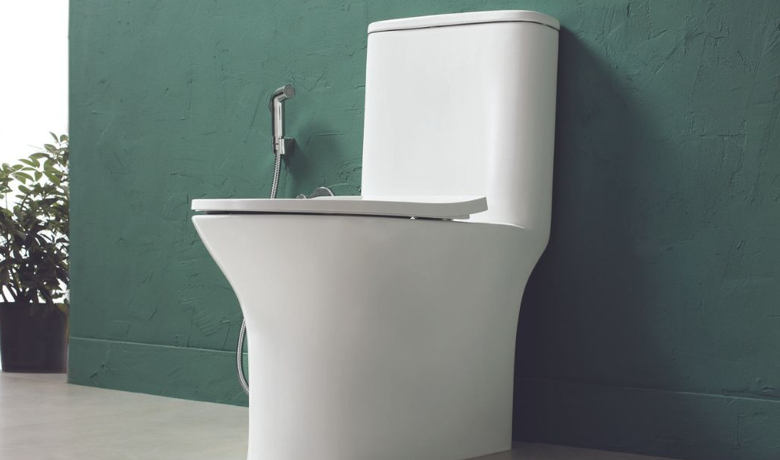Top 5 Common Problems with Western Commodes and How to Fix Them

Western commodes have become a standard feature in modern bathrooms, offering both comfort and convenience. However, like any frequently used fixture, they can encounter issues over time. From clogged pipes to leaky flush tanks and weak flushes, these common issues can impact not only the functionality but also the hygiene of your space. Fortunately, most of these issues are easy to identify—and with the right approach, just as easy to fix.
In this guide, we’ll walk you through the five most common issues with Western commodes and how you can try to solve them yourself.
1. The Clogged or Blocked Toilet
A clogged Western commode is one of the most common issues you might face. Dealing with a slow drain or complete blockage can be quite inconvenient. Over time, items like toilet paper and or waste build-up can lead to clogs in the pipes.
In such a situation, you can just use a simple plunger. Press the plunger firmly over the drain, ensuring it creates a tight seal. Then, push down several times. If that doesn’t work, a toilet auger is another tool you can try. It’s designed to reach deeper into the pipes and can break up stubborn clogs.
Alternatively, a urinal pot or a more efficient drainage system can prevent frequent blockages, especially in busy households.
2. Leaking Tank or Base
You may notice water pools forming around your commode. This could be just a leak from the tank or base, which wastes water and also increases your utility bills. So, you should repair them as soon as they are spotted. A worn-out seal, cracks in the porcelain, or broken parts inside the tank generally cause leaks.
Begin by attempting to identify the source of the leak. If it’s coming from the base, the problem could be with the wax ring used to seal the connection between the commode and the drainpipe. To fix this, simply remove the commode, replace the wax ring, and reinstall it.
For tank leaks, the problem is often a damaged flush valve or worn-out seals. Once you replace these parts, the water leak may stop. Fixing them repeatedly can be problematic; therefore, consider switching to a Western commode with improved seals or modern materials, such as those found in models like Stevia or Nettuno, from premium suppliers like Simpolo Tiles and Bathware, which can not only reduce your cost but will give a better look to your bathroom as well.
3. Weak Flush
A weak flush can lead to blockages and improper waste removal. If it consistently experiences issues, it may be due to water pressure or a problem with the flushing mechanism.
The first step is to check the water level in the tank. If it’s low, then you need to adjust the float so the tank fills up to the correct level. A tank which has a low water level may not provide enough force for a proper flush. If this is not helping, then you can inspect the flapper valve. If it turns out to be damaged or worn, you may have to replace it.
See also: Home Loans with an Overdraft Facility: What You Need to Know
4. Unpleasant Odours
When your commode starts emitting a foul odour, it’s a sign that bacterial buildup has occurred. That means previous leaks or waste buildups were not addressed properly. Regardless of the situation, you should address the issue as soon as possible. The first step is to clean the toilet thoroughly, paying special attention to the rim and flush valve. Then, you have to use a toilet cleaner that targets bacteria and stains. If you still get the foul odour, the cause might be a broken wax ring or a faulty seal around the base of the commode. Due to these faults, waste may be seeping, resulting in a foul odour.
5. Running Toilet
A constantly running commode not only wastes water but also contributes to higher monthly water bills. This issue is usually caused by a faulty flapper or fill valve.
Start by turning off the water supply to inspect the problem properly. Remove the tank lid and check the flapper valve. If it’s worn out or damaged, it should be replaced. Also, examine the fill valve to ensure it’s functioning correctly.
If this issue persists, consider upgrading to a newer, more efficient model. Modern EWC units are built with advanced flushing systems that minimise water waste and prevent continuous running. For a complete upgrade, consider adding a water-saving urinal pot as well, especially in shared or high-traffic bathrooms where efficiency is even more crucial.
Conclusion
A Western commode has become a staple in every household. But with it, there can come a few common problems which you can tackle with some handyman knowledge. Additionally, regular maintenance goes a long way. Whether you’re dealing with clogs, leaks, weak flushes, odours, or a running toilet, most solutions are simple and manageable. Choosing well-designed, high-quality bathroom fixtures can also help prevent many of these issues. Products with advanced features and efficient flushing systems not only enhance the bathroom’s appearance but also reduce the chances of frequent problems, making them a smart and reliable choice for everyday use.


